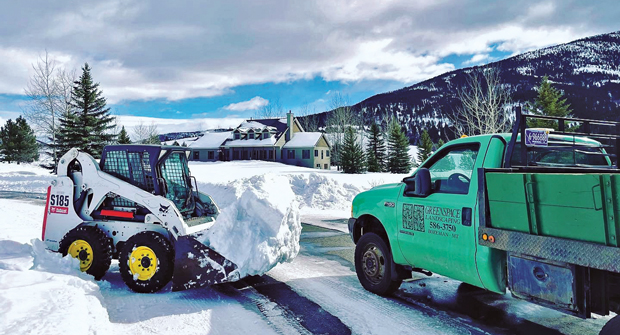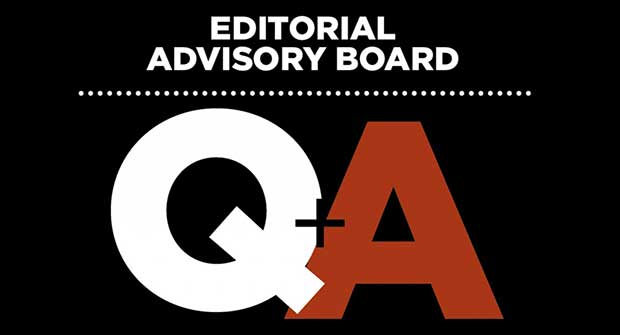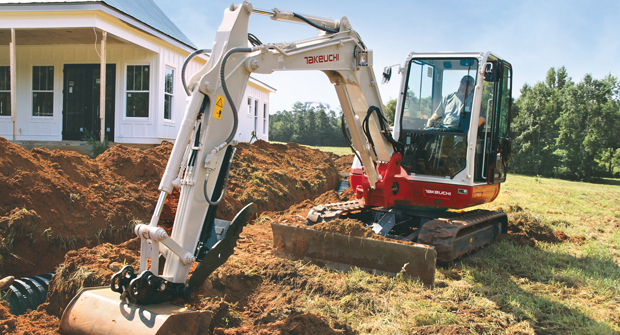Arian Kambakhsh is no stranger to the world of dealmaking and number crunching.
Before becoming the owner of Greenspace Landscaping in Bozeman, Mont., last summer, Kambakhsh’s professional pursuits were in the world of finance and the stock market. His day-to-day was filled with plenty of buying and selling, analyzing the markets and deciding which deals were the right ones for his clients.
Considering all that — and the fact that he was less than a year removed from making his biggest purchase of all when he bought Greenspace — you’d think that Kambakhsh’s first experience in buying new equipment for his company would be just another day at the office.
Think again … at least to some extent.
“There was some trepidation, sure,” Kambakhsh says. “Studying pricing and going through the negotiating process were things that weren’t new to me, obviously, so I felt comfortable with the numbers and all that.
“But because I was new to the industry and working with new people, I wanted to be careful as we went through the process. I wanted to make sure that I was doing right by the people who work for me and doing right by the company.
Because of my background, it wasn’t an overly intimidating process, but it was a new one, and I wanted to do it right.”
So, what lessons did Kambakhsh learn from his first equipment-buying experience in the landscape business? What went right, what went wrong and what would he share with other industry colleagues who were also going through it all for the first time? In the coming pages, we’ll dive into all that, his unique path from the financial sector to the green industry and his biggest takeaways from his recent shopping spree on behalf of Greenspace.
New adventures
Kambakhsh never had his own lawn-mowing business as a kid or any other real ties to the green industry before he purchased Greenspace. But after his long stint in the world of finance ended — the last four years as a stock trader based in Chicago — and he began to study what would come next, he quickly found a lot to like about the landscape and lawn care business model.
“I was looking for something that was still very entrepreneurial, that would be attractive to a self-starter,” he says. “My former boss had left finance, too, and bought a business, and I started looking down the same path. Landscaping ticked a lot of boxes — good industry with a good potential for growth, good recurring revenue, things like that.
“I thought I could bring a fresh perspective to whatever company I purchased. Sometimes, business owners who have been doing the same thing for 20 or 30 years are happy with the status quo and don’t want to change anything. I thought that presented an opportunity for someone like me who wanted to make new investments.”
At first, Kambakhsh’s search wasn’t limited to landscaping — any service industry company with a similar model would do — and it was nationwide in scope, although he preferred Bozeman because he had relocated there from Chicago to be closer to his longtime girlfriend.
But as luck would have it, he soon learned about Greenspace — the right business in the right location — and once the purchase was final, he began working to learn all he could about the company and the green industry.
“I did my best to go in with a totally open mind about everything,” Kambakhsh says. “I knew I couldn’t do as good of a job as the previous owners at being a landscaper, but I did think I could provide value to the company with things … like business development, sales, efficiency, accounting. Areas that maybe they hadn’t focused on before or felt like they had expertise in.”
Solid footing
In addition to the broader positives of the landscape business that attracted Kambakhsh to the industry, he found plenty of specific plusses in Greenspace Landscaping. This was no struggling business in a less-than-ideal market looking for a chance to start fresh.
Instead, Kambakhsh took over an asset with a 30-plus-year track record in Bozeman, one of America’s fastest-growing cities (between 2010 and 2020, Bozeman boasted a growth rate of over 40 percent). Greenspace had a long list of loyal customers, was active in the community and featured a strong, veteran team.
“Greenspace had a very good reputation when I came into the picture,” he says. “It had a strong, established base of customers, a really good team, a good employee culture. The company had a history of strong financial performances, so this wasn’t a turnaround or anything like that. There were definitely a lot of positives that made me want to buy it.”
Because of that, there was no real urgency for Kambakhsh to make substantive changes to the company and its operations when he took the reins on Aug. 1 of last year. It was also nearing the end of what can be a relatively short landscaping season in Bozeman, so there were even more reasons to take it easy and not rock the boat too much as he adjusted to his new role and a new industry.
“I spent a fair amount of time in the field just observing, which helped. I did the same in our offices, just to get an idea of the existing processes and how they did things,” Kambakhsh says. “I also talked to a lot of other landscaping owners from around the country at conferences, which helped a lot.”
He saw plenty of early evidence that new equipment purchases — including fleet vehicles — would be on his to-do list sooner rather than later.
“There were several great managers here who were very communicative about that kind of thing … and it did become apparent pretty quickly that changes needed to be made regarding equipment,” Kambakhsh says. “We were in the heart of our summer season then, almost all our equipment was being used, so if something went down and you didn’t have an adequate backup for it, that would be a big problem. That started happening more than I was comfortable with.”
Since Kambakhsh took control at Greenspace, the company has added four new Ford trucks to its fleet, two new Scag zero-turn riding mowers and bolstered its snow removal operations — which can account for about 20 percent of the company’s annual revenue — with two snow plows and a pair of new salt and sand spreaders from Boss. Several small handheld pieces such as chainsaws, blowers and trimmers have also been added.
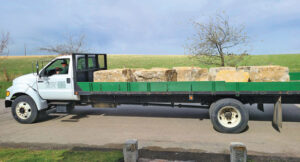
Fortunately, only the purchase of the new mowers was what Kambakhsh would classify as an “emergency” buy. “Between the time that we came to a purchase agreement (for the company) and the closing date, a couple of mowers went down and seemed irreparable,” he says. “The general manager recommended that we replace those ASAP, and I agreed, so those came on board fairly quickly.”
The remainder of the purchases were made to either replace equipment that was still functioning but nearing the end of its life expectancy (in the case of the trucks) or to improve Greenspace’s equipment bench strength (in the case of the snowplows and spreaders). And in most instances, Kambakhsh followed his employees’ lead when determining what brands and models to purchase.
“The only thing I went against them on was sticking with Ford (for the trucks),” he says. “They all had a pretty bad impression of the Ford trucks we had, but that was mainly because they were older and broke down a lot. I think with a few newer ones with more technological bells and whistles, their opinion is going to change a little bit.”
Class is in session
So, what lessons did Kambakhsh take away from his first landscape equipment purchasing experience? He cited three key areas that he said will help inform his decision-making the next time the folks at Greenspace Landscaping are in the market.
1. Make it a team effort
Aside from the decision on the brand of truck to purchase, where Kambakhsh exercised some executive authority, he says he found great value in trusting the staff to recommend what needed to be replaced and when, what brands to consider and what features were necessary on any new machines added to the fleet.
And while he acknowledges that strategy is a bit of a no-brainer considering his newcomer status to the company and the industry, he says it’s one that won’t change during future purchases.
“I’m a big proponent of letting the people who use the equipment have a say in what that equipment should be and how it’s taken care of,” Kambakhsh says. “And I brought our shop manager into the process, too, to see what he thought would be best. I really trusted their opinions on what direction we should go.”
2. Flexible spending
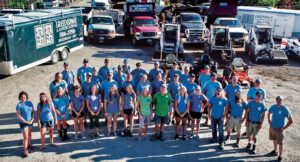
Kambakhsh admits that how he and Greenspace paid for the new equipment — he paid outright for some of the equipment and financed the purchase of others — taught him his biggest lesson as he went through the purchase process for the first time.
That blend was a function of the unique business situation he found himself in as the new owner of the company.
While Greenspace had been in business for more than three decades before he came into the picture and he acquired all company assets in the purchase, from a strict accounting perspective, the company under Kambakhsh’s leadership was considered a brand new one, with no credit history to speak of.
“That makes it hard to get financing from a lot of sources,” he says. “I still had a good working line of credit, but it was with a relatively high interest rate. That led us to lean toward purchasing outright where we could because some of the rates were so unappealing.”
That was the case with the trucks, so three of the four new ones were purchased outright, as was the snow equipment. Kambakhsh says the interest rate on the mowers was much easier to digest, so those new purchases were financed. And he says that in the future, he’ll consider leasing options much more seriously than he did the first time around.
3. Morale boosters
Although the new equipment has provided plenty of practical benefits to Greenspace and its employees, Kambakhsh has been pleasantly surprised about a more abstract benefit — the effect that investment has had on company morale and culture, which was already at a high level.
“The impact that has had is hard to quantify, but you definitely see it, and that was something I didn’t really consider,” he said. “I know that in the past, the company lost a few employees because they weren’t doing big CapEx (capital expenditures) purchases, so there were instances where trucks were broken down or things like chainsaws weren’t working. So, maybe you saved $300 or $400 because you didn’t buy a new chainsaw, but losing a valuable employee can cost far more than that over the years.
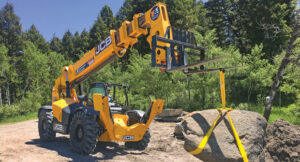
“What I saw was that investing in that new equipment was really viewed by our team as an investment in the people that we have here. I’m glad that’s how it was perceived, and it was a good lesson for a new owner like me.”
Coming attractions
Less than a year into his ownership journey at Greenspace Landscaping, Kambakhsh says he’s learned plenty beyond just outfitting his company’s fleet. He’s looking forward to growing the company, expanding its customer base and adding team members along the way.
And he says that the lessons learned from his first foray into equipment purchasing will play a key role in making sure future years are just as successful as his first.
“We do have things on our shopping list. We want to get another skid-steer, maybe something like a Ditch Witch for irrigation work, a couple of enclosed trailers,” he says. “We just want to stay on top of the equipment that we’ll need for projects we have coming up. We want to make sure we have the right equipment so we don’t fall behind and aren’t able to service the clients the way we want to.”
